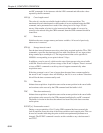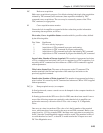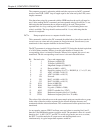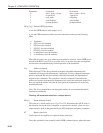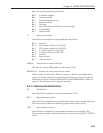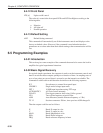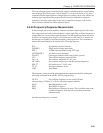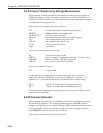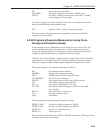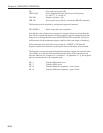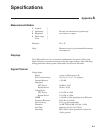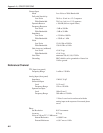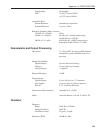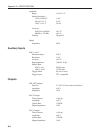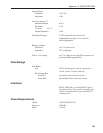
6-32
Chapter 6, COMPUTER OPERATION
6.5.04 X and Y Output Curve Storage Measurement
In this example, the lock-in amplifier is measuring a current input signal applied to
the B input connector and the measured X output and Y output are recorded for 10
seconds at a 100 Hz sampling rate. The acquired curves as read back to the computer
are required in floating point mode.
The sequence of commands is therefore as follows:
IE 2 Set reference mode to external front panel input
IMODE 1 High bandwidth current input mode
AUTOMATIC 1 AC Gain control automatic
FLOAT 1 Float input connector shell using 1 kΩ to ground
LF 0 Turn off line frequency rejection filter
SEN 18 Set sensitivity to 1 nA full-scale
TC 10 Set time constant to 50 ms
AQN Auto-Phase
Now the curve storage needs to be set up:
NC Clear and reset curve buffer
CBD 19 Stores X output, Y output and sensitivity (i.e. bits 0, 1 and 4)
LEN 1000 Number of points = 100 Hz × 10 seconds
STR 10 Store a point every 10 ms (1/100 Hz)
The data is acquired by issuing:
TD Acquires data
As the acquisition is running, the M command reports the status of the curve
acquisition. Once this indicates the acquisition is complete (i.e. parameter 1 = 0,
parameter 2 = 1), the acquired data may be transferred to the computer using:
DC. 0 Transfers X output values in floating point mode.
DC. 1 Transfers Y output values in floating point mode.
The input routine of the program must be prepared to read and store 1000 responses
to each of these commands.
6.5.05 Transient Recorder
In this example, the signal recovery capabilities of the lock-in amplifier are not used,
but the auxiliary inputs are. The voltage applied to the rear panel ADC1 input is
sampled and digitized at a rate of approximately 40 kHz, with the values being stored
to the curve buffer. Sampling is required to start on receipt of a trigger at the rear
panel TRIG IN connector and must last for 500 ms.
The sequence of commands is therefore as follows:



